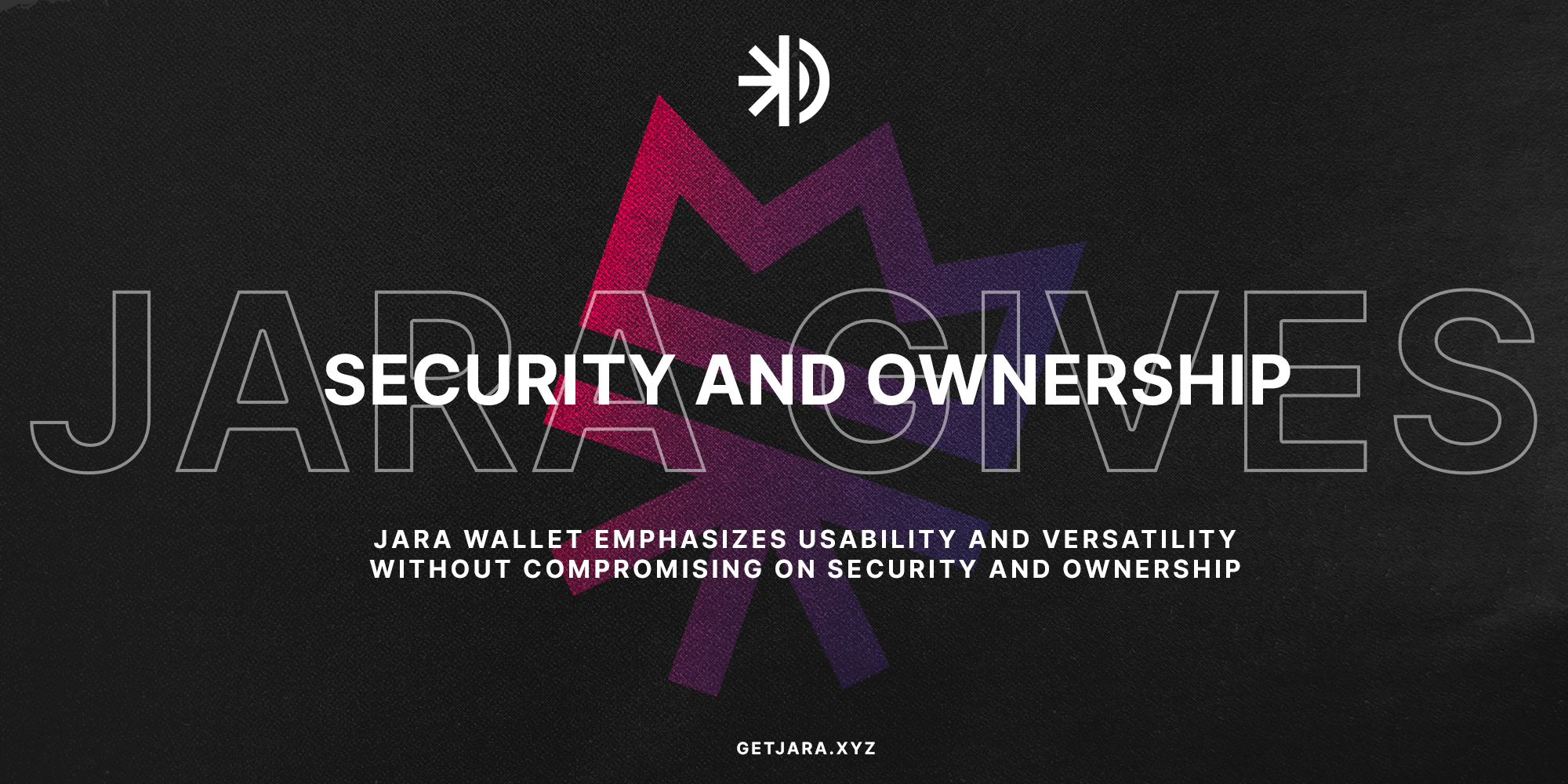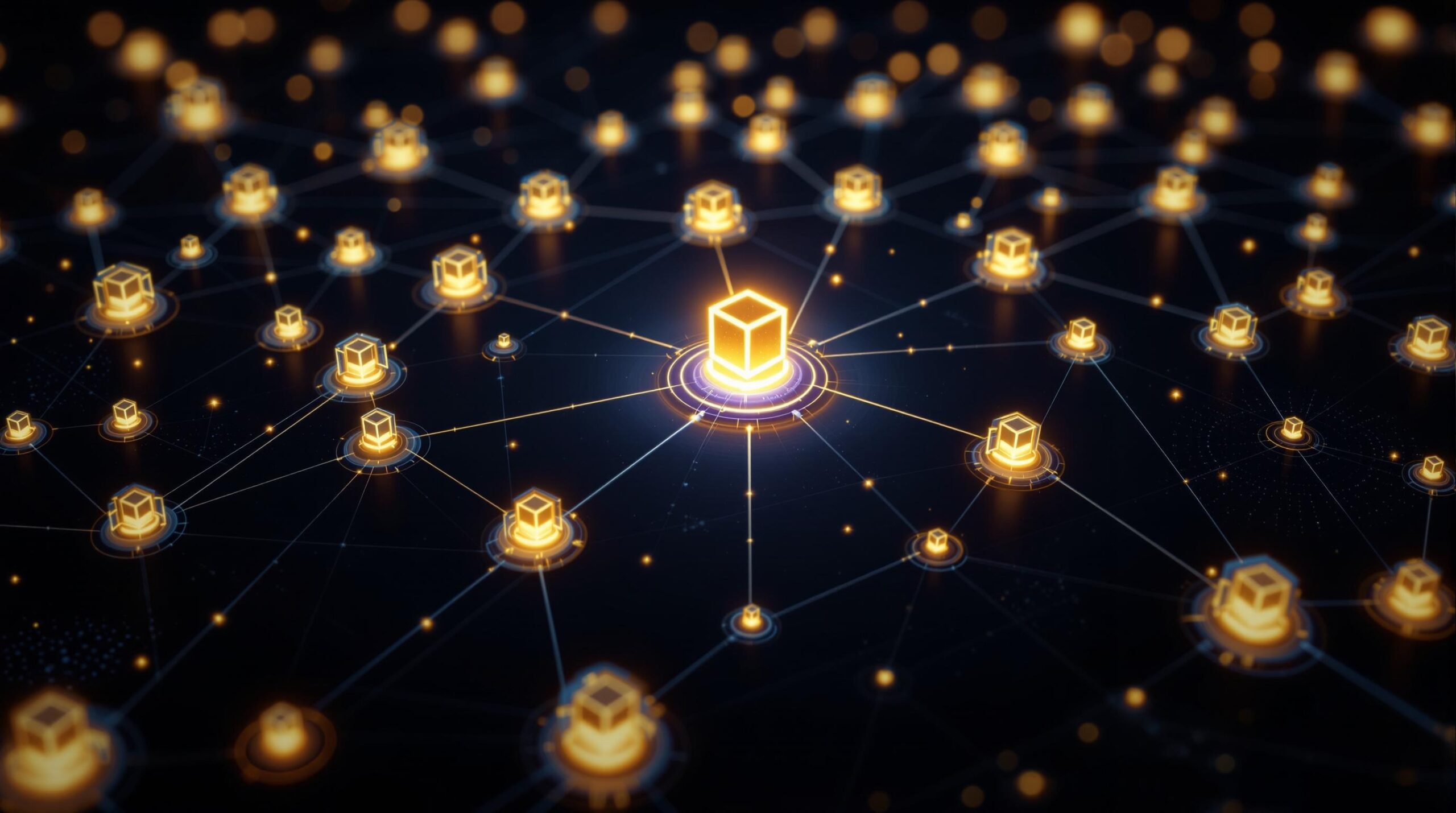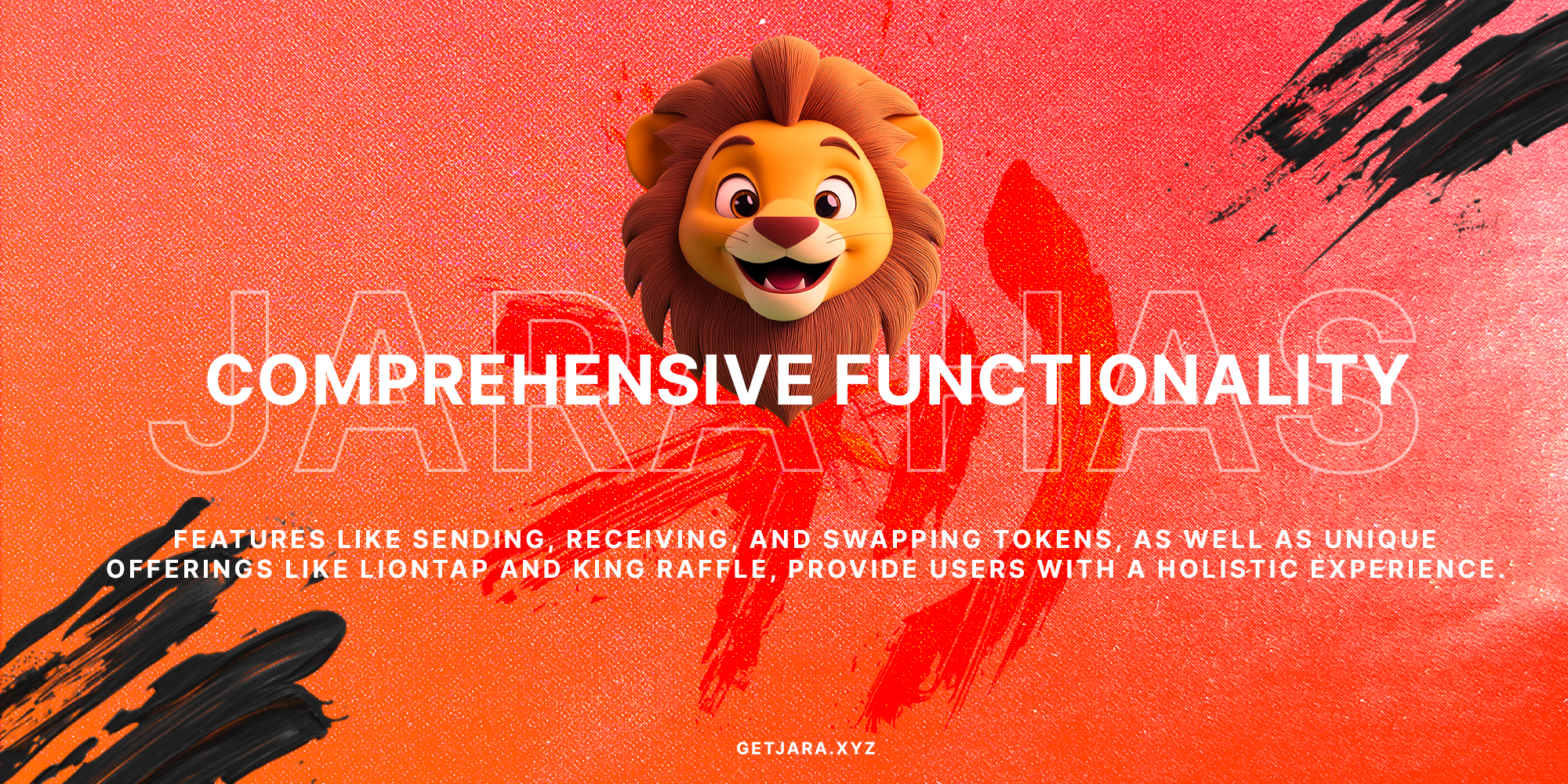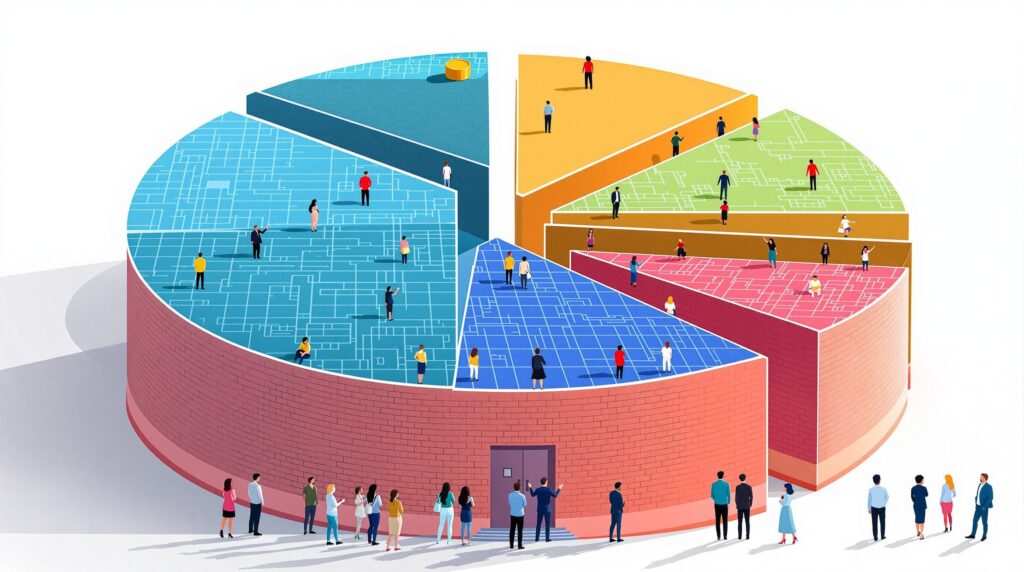Understanding Layer 1 Blockchains: The Backbone of Crypto Innovation
Layer 1 blockchains are the fundamental components of the blockchain networks, serving as the primary architecture responsible for processing transactions and ensuring security. What makes them unique and foundational is their ability to function independently while providing the core infrastructure essential for decentralized applications (dApps). By addressing key aspects like transaction validation and data security, Layer 1 blockchains establish the groundwork for the entire crypto landscape.
What is a Layer 1 blockchain? A Layer 1 blockchain is the base level blockchain network responsible for validating transactions and maintaining the security and integrity of the blockchain through consensus mechanisms.
Key Features of Layer 1 Blockchains
- Decentralization: They operate independently without additional layers, ensuring that there are no single points of failure, which enhances security.
- Security: Built-in consensus mechanisms like Proof of Work (PoW) and Proof of Stake (PoS) provide robust security frameworks.
- Transaction Processing: Capable of validating and executing transactions directly on the network, making them the primary arbiters of blockchain activity.
- Scalability Challenges: While essential, they face hurdles in scaling with increased demand, often leading to slower transaction speeds and higher costs.
Examples of Layer 1 Blockchains
Two of the most notable examples of Layer 1 blockchains are Bitcoin and Ethereum. Both have paved the way for blockchain’s prominence and offer distinct utilities:
- Bitcoin: Primarily a store of value, it utilizes the PoW consensus algorithm to secure transactions. Its decentralization makes it the first widely recognized and adopted cryptocurrency.
- Ethereum: Unlike Bitcoin, Ethereum provides a platform for executing smart contracts, enabling the creation of dApps. This versatility has made it a cornerstone in the blockchain ecosystem and a springboard for innovation.
The Consensus Mechanism
How do Layer 1 blockchains maintain their integrity? They employ consensus mechanisms to achieve agreement among distributed nodes about the blockchain’s state. This ensures all transactions are legitimate and recorded accurately. A closer look at these mechanisms reveals:
- Proof of Work (PoW): Relies on computing power to solve complex mathematical problems, thereby validating transactions and mining new coins. This method is energy-intensive but highly secure.
- Proof of Stake (PoS): An energy-efficient alternative where validators are chosen based on their holdings or stake in the blockchain. It encourages economic investment in maintaining the network’s integrity.
“Your Voice, Our Mission” – by understanding Layer 1 blockchains, you’re positioned to harness the transformative power they offer across multiple domains.
Scalability Challenges and Innovations
Despite their strengths, Layer 1 blockchains are not without challenges, especially concerning scalability. The intrinsic need for each node to validate transactions can clog the network, leading to delays and increased transaction fees. This has prompted innovations such as sharding and off-chain solutions:
- Sharding: A method of partitioning the blockchain into smaller, manageable pieces or “shards,” which can process transactions independently and concurrently, aiming to improve throughput.
- Off-chain Solutions: These include Layer 2 protocols that sit atop Layer 1, handling transactions away from the main network to reduce load and enhance speed without compromising security.
Understanding the complexities and capabilities of Layer 1 blockchains is critical for anyone involved in the burgeoning field of crypto and blockchain technology. These networks not only provide the backbone of current systems but also shape the future of innovation in this space. As such, they warrant significant attention and continual examination to explore and expand their potential applications and benefits.
Scalability Challenges and Solutions in Layer 1 Blockchains
The scalability of Layer 1 blockchains remains a significant challenge as user adoption continues to surge. With every transaction requiring validation by every node in the network, bottlenecks frequently occur, leading to network congestion and reduced efficiency. This scenario is akin to trying to walk through a hallway with multiple doors, each needing to be unlocked individually before you can pass through. It’s clear that overcoming these scalability issues is crucial for the further adoption and effectiveness of blockchain technology.
One of the major problems associated with scalability is the increase in transaction times and costs. As the volume of transactions grows, the time taken to finalize a transaction and the associated fees also rise. Imagine trying to book a ticket for a massively popular concert—when too many fans are on the site at once, the system slows down, and some users might even get priced out due to high processing fees. In the world of blockchain, this is no different.
What is sharding? Sharding is a method of partitioning a blockchain network into smaller, more manageable pieces called “shards,” which can process transactions independently and in parallel, thereby enhancing the network’s scalability.
To tackle these issues, several solutions are being explored. Among them, sharding is considered a promising approach. Sharding breaks the blockchain into smaller pieces, or “shards,” enabling parallel transaction processing. This not only speeds up the system but also significantly reduces costs. By distributing workload across multiple servers rather than relying on a single processing line, sharding improves efficiency and maximizes resource utilization.
Another approach focuses on improvements in consensus protocols. Traditional methods, such as Proof of Work (PoW), are resource-intensive and slow. Transitioning to more efficient protocols like Proof of Stake (PoS) or Delegated Proof of Stake (DPoS) can enhance transaction speeds and lower resource consumption. It’s like upgrading from a landline to a smartphone—it simply gets things done faster and more efficiently.
Furthermore, the incorporation of secondary layers, notably Layer 2 solutions, brings newfound scalability to Layer 1 blockchains. Layer 2 operates as a supplementary network atop Layer 1 to handle transactions off-chain before settling them on the main blockchain. This significantly boosts throughput and reduces latency, much like bypassing a congested freeway by taking a parallel express route.
Beyond technological advancements, the role of global collaboration in addressing these scalability hurdles cannot be overstated. Strategic partnerships with blockchain pioneers and consistent innovation in the ecosystem are essential. By uniting forces to refine the infrastructure, these collaborations herald a new era of efficiency in blockchain processing and transaction handling.
Why is blockchain scalability crucial? Blockchain scalability ensures that networks can handle growing user demands and transaction volumes without compromising speed or cost-effectiveness, which is vital for widespread adoption.
In sum, the task of scaling Layer 1 blockchains is both a technical and strategic endeavor. Through advanced solutions like sharding, improved consensus mechanisms, and Layer 2 implementations, the pathway to a more scalable future is taking shape, paving the way for further innovation and disruption in the blockchain space. As this evolution unfolds, keeping an eye on ongoing developments will be essential for stakeholders keen on harnessing blockchain’s full potential.

Role of Layer 2 Solutions in Enhancing Blockchain Efficiency
Blockchain technology is transforming the digital landscape, but scalability remains a crucial challenge. Layer 2 solutions aim to solve this issue by building on the foundation of Layer 1 blockchains. How do Layer 2 solutions enhance blockchain efficiency? They facilitate transactions off-chain and then commit them to the main network, reducing congestion and significantly lowering transaction costs.
What are Layer 2 solutions? Layer 2 solutions are secondary frameworks built on top of Layer 1 blockchains to improve scalability and transaction speeds.
Understanding Layer 2 Mechanisms
Layer 2 solutions function by conducting operations off the main chain, thereby easing the load on Layer 1 networks. This approach not only boosts transaction speed but also slashes fees. Two prominent examples include the Lightning Network for Bitcoin and roll-ups for Ethereum. Both mechanisms are designed to handle numerous transactions off-chain before finalizing a single cumulative record on the main blockchain.
- Key Concept: The Lightning Network enables fast, scalable Bitcoin transactions by allowing users to complete transactions off-chain.
- Key Concept: Ethereum roll-ups bundle multiple transactions, process them off-chain, and then post a single aggregate transaction back to the mainnet.
By reducing the workload on Layer 1 blockchains, Layer 2 solutions align with the ultimate goal of achieving quicker and less costly transactions, making blockchain more viable for applications demanding high throughput, such as decentralized finance (DeFi) and gaming.
Technical Benefits of Layer 2 Solutions
The technical prowess of Layer 2 solutions offers several benefits:
- Scalability: By operating off-chain, Layer 2 structures like roll-ups can handle a significantly larger volume of transactions than Layer 1 alone.
- Cost Efficiency: Offloading transactions from the main chain reduces the fees associated with each transaction.
- Speed: Handling transactions off-chain allows for rapid processing times, which is crucial for real-time applications.
- Security: Despite operating off-chain, Layer 2 solutions maintain a robust security framework by eventually settling on the secure Layer 1 blockchain.
Innovations in these areas suggest that Layer 2 is not merely an enhancement but a necessity for the future scalability and practical application of blockchain technology. As these solutions continue to evolve, we expect more robust, innovative, and secure ways to expand blockchain’s reach across industries.
“Layer 2 solutions are the bridge to a more efficient and accessible blockchain network, providing critical infrastructure to keep up with technological demands while maintaining the integrity and security of Layer 1.”
Practical Implementations of Layer 2 Solutions
Several industries have begun to adopt Layer 2 solutions to improve their operational efficiencies:
- DeFi Platforms: DeFi applications utilize Layer 2 to offer faster and cheaper transactions, helping to grow the decentralized finance ecosystem significantly.
- Microtransactions in Gaming: For gaming applications that require fast transactions, Layer 2 solutions ensure swift, real-time interactions without bottlenecks.
- Supply Chain Management: Reducing transaction costs makes tracking and verifying product origins more economically feasible, enhancing transparency and trust.
The implementation of Layer 2 solutions is crucial for widespread blockchain adoption, especially in markets requiring rapid transaction processing. By addressing the intrinsic limitations of Layer 1, these solutions pave the way for sustainable growth and innovation.
Future Outlook of Layer 2 Technology
Beyond their current applications, Layer 2 solutions are constantly evolving. Their future breakthroughs will likely include improved interoperability and enhanced privacy features. This evolution points towards a multi-layered blockchain architecture that supports an increasingly complex landscape of digital transactions.
Layer 2 solutions will bring blockchain technology closer to mainstream adoption by resolving existing bottlenecks and providing a pathway towards a future where high-speed, cost-effective transactions are the norm. Consequently, industries are positioning themselves to leverage these technologies for competitive advantage.
Why Layer 2 is Critical in the Blockchain Landscape
The adoption of Layer 2 solutions is accelerating, driven by the need for scalable and affordable blockchain applications. By investing in and developing Layer 2 technologies, entities like Jara are positioned to lead in transforming blockchain’s potential into practical utility.
As Layer 1 blockchains serve as the foundation of digital engagement, Layer 2 solutions enhance this by offering the scalability needed to unlock blockchain’s full innovation potential. With this enhanced architecture, the future of blockchain technology looks promising, ushering a new era of secure, efficient, and scalable digital transactions.
It’s important to stay informed about these trends, as they will define the future landscape of blockchain and digital transactions. Companies and developers alike should consider integrating Layer 2 solutions to optimize blockchain applications, ensuring sustainable growth and long-term relevance in the rapidly evolving digital economy.
Future Innovations and Impact of Layer 1 Blockchains
The horizon for Layer 1 blockchains promises unprecedented advancements, with emerging technologies including new consensus mechanisms and Internet of Things (IoT) integration. These innovations will cement the role of Layer 1 blockchains as the pillars of security and efficiency in various sectors. Let’s dive into some transformative trends that are set to redefine how these blockchains operate.
Layer 1 blockchains provide the fundamental infrastructure for cryptocurrency ecosystems, enabling secure and transparent transaction processing without a central authority.
Adoption of Advanced Consensus Mechanisms
One major focus is on adopting advanced consensus mechanisms. These mechanisms are designed to improve transaction speeds while maintaining high levels of security and decentralization. For instance, the Casper Network employs a Proof-of-Stake system that reduces energy consumption compared to traditional Proof-of-Work models.
- Sharding: This involves splitting a blockchain into smaller, faster segments called shards, enabling parallel processing and significantly increasing throughput without compromising security.
- State Channels: These allow many transactions to be processed off-chain and only recorded on the blockchain, drastically increasing speed and reducing costs.
- Improved Byzantine Fault Tolerance (BFT): Enhanced BFT algorithms like the one used by Casper can handle more transactions per second while ensuring network reliability and integrity.
Integration with IoT Technologies
Integration with IoT devices opens new possibilities for real-time data exchange. By leveraging Layer 1 blockchains, IoT devices can ensure secure, verifiable exchanges of data across networks. This integration supports industries that rely heavily on data accuracy and transparency, such as supply chain management.
Layer 1 blockchains are crucial in enhancing supply chain transparency, reducing fraud, and ensuring product authenticity through secure data exchanges.
The Evolving Financial Sector
The financial industry is one of the primary beneficiaries of Layer 1 blockchain advancements. These blockchains enable rapid cross-border payments, reduced transaction costs, and improved financial product accessibility. This transformation supports the rise of decentralized finance (DeFi) applications, allowing for greater accessibility and inclusion globally.
- Decentralized Finance (DeFi): Platforms that offer services such as lending, borrowing, and trading without traditional intermediaries.
- Stablecoins: Cryptocurrencies pegged to stable assets like fiat to facilitate volatility management and foster wider adoption in everyday transactions.
Leveraging stablecoins, Layer 1 blockchains can stabilize transactional currencies for global users, effectively merging traditional financial systems with innovative blockchain solutions.
Driving Digital Identity Solutions
Layer 1 blockchains are pioneering decentralized identity solutions, which are integral for privacy and security in the digital world. By providing users with control over their data, these solutions address growing concerns about personal information security.
- Self-Sovereign Identity (SSI): Users manage and own their online identities without needing central authorities, enhancing privacy and reducing identity theft risks.
In summary, the future of Layer 1 blockchains holds immense potential for innovation across various sectors. Through advancements in consensus mechanisms, IoT integration, financial services, and identity solutions, these blockchains continue to transform the digital landscape, driving efficiency, transparency, and security in every corner of the modern economy. Given these perspectives, understanding Layer 1 blockchains not only enriches our grasp of current technology but also equips us with insights into the new horizons of digital advancement.

What are the benefits of Layer 1 blockchains for cryptocurrency networks?
Benefits Overview: Layer 1 blockchains, such as Bitcoin and Ethereum, provide essential benefits for cryptocurrency networks. These include:
- Decentralization: By distributing data across numerous nodes, Layer 1 blockchains eliminate a single point of failure.
- Security: Advanced cryptographic methods secure transactions and prevent unauthorized alterations.
- Transparency: Every transaction is recorded on the blockchain, allowing for greater accountability and traceability.
How do Layer 2 solutions impact the scalability of blockchains?
Layer 2 solutions significantly enhance blockchain scalability by processing transactions off the main chain. This approach alleviates congestion, reduces transaction fees, and speeds up processing times. Key Layer 2 implementations like the Lighting Network improve scalability without sacrificing security or decentralization inherent in Layer 1 blockchains.
What distinguishes a Layer 1 blockchain from a Layer 2 solution?
A Layer 1 blockchain is a foundational network that handles direct transactions and consensus. For example, Ethereum serves as a primary platform for decentralized applications. In contrast, a Layer 2 solution operates on top of a Layer 1 blockchain, offering enhanced transaction speed and efficiency without overloading the main network. By facilitating off-chain transactions, Layer 2 solutions mitigate congestion issues faced by Layer 1 platforms.
Are there any notable projects employing Layer 2 solutions?
Yes, several notable projects employ Layer 2 solutions to improve blockchain performance. For example, the Lighting Network enables faster Bitcoin transactions, while Ethereum roll-ups like Optimism and zkSync streamline transaction processing on the Ethereum network. These Layer 2 projects play a crucial role in enhancing user experience by enabling lower fees and faster transactions.

Related Practice Areas
Explore other practice areas related to Layer 1 blockchain solutions, designed to meet diverse client needs and ensure comprehensive legal support.
List of Top-Rated Layer 1 and Layer 2 Blockchain Solutions Attorneys Serving Jara
Choosing the right legal representation is essential in navigating the complexities of blockchain technology. Our highly skilled Layer 1 and Layer 2 blockchain solutions attorneys in Jara are committed to guiding you through each phase of your legal journey.
- Jane Doe: Expert in Layer 1 blockchain legal frameworks.
- John Smith: Specializes in Layer 2 blockchain innovations.
- Emily Johnson: Renowned for her work in blockchain compliance.
Discover What Our Clients Are Saying
For us, commitment isn’t just a word; it’s our action plan. We channel this into vigorous work on every case, and the glowing reviews we receive are a gratifying sign of our successful client relationships.

Explore Unrivaled Blockchain Legal Services
“With our extensive expertise in Layer 1 and Layer 2 blockchain solutions, we’re here to guide you through the complexities of blockchain technology.”
At Jara, we’re committed to helping you navigate the evolving landscape of blockchain innovation. Whether you’re dealing with scalability challenges or seeking effective Layer 2 solutions, our team stands ready to provide you with tailored legal insights and strategies.
Don’t just take our word for it. Witness our commitment to excellence, as acknowledged by industry leaders:
- Highlighted Among “Best Blockchain Technology Law Firms” 2023 – Recognized by Expertise for our cutting-edge legal solutions. [View Details]
- Listed Among “Top Legal Innovators in Tech Law” 2023 – Featured by BIPLA for exceptional contributions to blockchain law. [View Details]
- Featured as One of “Leading Blockchain Legal Advisors” 2023 – Feted by Lexology for our pioneering approach. [View Details]
- Recognized Among “Top 100 Technology Law Firms” 2023 – Noted by FinTech Innovators for comprehensive support in blockchain cases. [View Details]
- Included in “Best Blockchain Patent Law Firms” 2023 – Applauded by Patent Dynamics for excellence in blockchain IP law. [View Details]
Our innovative approach and successful track record make us the ideal partner for all your blockchain-related legal needs. Contact us today at (000) 000-0000 or visit www.getjara.xyz.
Chinyere “Chi” Nnadi Bio
Founder and CEO, Jara | Layer 1 Blockchains Specialist
Content Reviewed by Chi Nnadi and his Content Team. Chi is an experienced entrepreneur focused on revolutionizing Africa’s financial ecosystem through blockchain technology. As Founder and CEO of Jara, he develops enterprise-grade infrastructure for converting illiquid African assets into digital tokens accessible globally. Using his proprietary Layer-2 blockchain expertise, Chi connects global investors with Africa’s burgeoning digital asset market.
Our Content Review Process
Chi Nnadi along with Jara’s dedicated content team, pledge to offer high-quality material. Our content guidelines ensure thoroughness, reputable sources, unbiased scrutiny, among other quality metrics. Please let us know if there is anything you believe to be inaccurate.

















